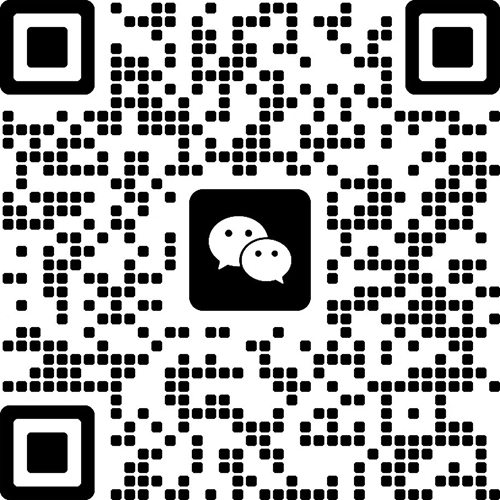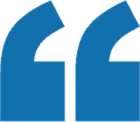Troubleshooting fiber optic signal loss in glass fiber optic LLR04-1,6-0,8-QW 1X4 connections requires a systematic approach and specialized knowledge. By understanding the system's components, common causes of signal loss, and advanced troubleshooting techniques, technicians can effectively diagnose and resolve issues. Regular maintenance, proper handling, and the use of appropriate tools are key to preventing signal loss problems. As fiber optic technology continues to advance, staying updated with the latest troubleshooting methods and equipment is crucial for maintaining optimal performance in critical industrial applications.
Troubleshooting Fiber Optic Signal Loss in LLR04-1,6-0,8-QW 1X4 Connections
Fiber optic signal loss in glass fiber optic LLR04-1,6-0,8-QW 1X4 connections can be a complex issue, but it's often solvable with the right approach. Common causes include connector misalignment, fiber damage, contamination, or improper installation. To troubleshoot, start by inspecting connectors for visible damage or dirt. Clean connectors using appropriate tools and techniques. Check for proper alignment and seating of connections. Verify cable integrity along its length. Use an optical power meter to measure signal strength at various points. If issues persist, consider replacing components or consulting with a fiber optic specialist. Regular maintenance and careful handling can prevent many signal loss problems in LLR04-1,6-0,8-QW 1X4 systems.
Understanding the LLR04-1,6-0,8-QW 1X4 Glass Fiber Optic System
Components and Structure of LLR04-1,6-0,8-QW 1X4
The LLR04-1,6-0,8-QW 1X4 is a sophisticated glass fiber optic system designed for precision industrial applications. Its core components include high-quality glass fibers, specialized connectors, and a robust outer casing. The system's structure is engineered to maintain signal integrity across various environmental conditions. The 1X4 configuration indicates a single input branching into four outputs, allowing for multiple simultaneous data transmissions or measurements.
Key Features and Applications
This glass fiber optic LLR04-1,6-0,8-QW 1X4 system boasts several notable features. It offers exceptional light transmission efficiency, minimal signal degradation over long distances, and resistance to electromagnetic interference. The LLR04-1,6-0,8-QW 1X4 finds applications in diverse industrial sectors. It's particularly useful in high-temperature bottle inspection, chemical tank level monitoring, and food packaging seal verification. The system's precision makes it ideal for PCB component inspection and pharmaceutical vial positioning. Its durability and reliability suit it for automotive micro-part assembly and textile thread break detection.
Importance of Signal Integrity
Maintaining signal integrity is crucial for the LLR04-1,6-0,8-QW 1X4's performance. Even minor signal loss can lead to inaccurate readings or system failures in critical applications. The system's design prioritizes signal preservation through high-quality materials and precision engineering. Understanding the factors that can compromise signal integrity is essential for effective troubleshooting and maintenance of this advanced fiber optic system.
Common Causes of Signal Loss in Fiber Optic Connections
Physical Damage to Fiber Optic Cables
Physical damage is a primary culprit in fiber optic signal loss. The delicate glass fibers within the LLR04-1,6-0,8-QW 1X4 can be compromised by excessive bending, crushing, or stretching. Microscopic cracks or breaks in the fiber core can significantly impair light transmission. Environmental factors like extreme temperatures or chemical exposure may also degrade the fiber's structure over time. Regular visual inspections and careful handling during installation and maintenance are crucial to prevent such damage.
Contamination and Cleanliness Issues
Contamination poses a significant threat to fiber optic signal integrity. Dust, oil, or other particulates on connector ends can scatter or block light transmission. Even microscopic contaminants can cause substantial signal loss in high-precision systems like the glass fiber optic LLR04-1,6-0,8-QW 1X4. Proper cleaning protocols using specialized tools and solvents are essential. Maintaining a clean work environment during installation and service is equally important to prevent contamination-related signal issues.
Connector Misalignment and Poor Connections
Connector misalignment is a subtle yet common cause of signal loss. The precision-engineered connectors of the LLR04-1,6-0,8-QW 1X4 require perfect alignment for optimal performance. Even slight misalignment can result in significant signal degradation. Poor connections due to loose fittings or improper seating of connectors can also lead to intermittent or persistent signal issues. Regular inspection and proper torque application during connection are vital to maintain signal integrity in these high-performance fiber optic systems.
Advanced Troubleshooting Techniques for LLR04-1,6-0,8-QW 1X4 Systems
Utilizing Optical Time-Domain Reflectometers (OTDR)
Optical Time-Domain Reflectometers (OTDRs) are powerful tools for diagnosing signal loss in LLR04-1,6-0,8-QW 1X4 systems. These devices send light pulses through the fiber and analyze the backscattered light to detect and locate faults. OTDRs can pinpoint issues such as breaks, bends, or splices that cause signal degradation. When using an OTDR with the LLR04-1,6-0,8-QW 1X4, it's crucial to select appropriate pulse widths and acquisition parameters to match the system's characteristics. Interpreting OTDR traces requires skill, but it provides valuable insights into the fiber's condition along its entire length.
Implementing Precision Optical Loss Test Sets
Precision Optical Loss Test Sets are essential for accurately measuring signal loss in glass fiber optic LLR04-1,6-0,8-QW 1X4 connections. These sets typically include a light source and a power meter, allowing for end-to-end loss measurements. When troubleshooting, it's important to use wavelengths that match the system's operational specifications. Calibrating the test set and establishing a reliable reference are crucial steps. By comparing measured losses against expected values, technicians can identify problematic segments or connections in the LLR04-1,6-0,8-QW 1X4 system. This method is particularly useful for verifying the performance of newly installed or repaired connections.
Advanced Connector Inspection Techniques
Advanced connector inspection techniques are crucial for maintaining the LLR04-1,6-0,8-QW 1X4's performance. High-magnification fiber microscopes allow for detailed examination of connector end faces, revealing contamination or damage invisible to the naked eye. Digital analysis tools can quantify scratches, pits, or debris, providing objective data on connector condition. For complex issues, interferometric analysis can be employed to assess the connector's surface geometry with nanometer-level precision. These advanced techniques are particularly valuable when dealing with persistent signal loss issues that standard cleaning and inspection methods fail to resolve.
Conclusion
FAQs
How often should I inspect my LLR04-1,6-0,8-QW 1X4 connections?
Regular inspections are recommended, typically every 3-6 months or more frequently in harsh environments.
Can environmental factors affect signal quality in the LLR04-1,6-0,8-QW 1X4?
Yes, factors like temperature fluctuations, humidity, and vibration can impact signal quality.
What's the typical lifespan of an LLR04-1,6-0,8-QW 1X4 system?
With proper maintenance, these systems can last 10-15 years or more in industrial settings.
Is special training required to troubleshoot LLR04-1,6-0,8-QW 1X4 systems?
Yes, specialized training in fiber optic troubleshooting is highly recommended for optimal results.
Expert Fiber Optic Solutions | GQSJ
At Shaanxi Ganqingsuji Electromechanical Technology Co., Ltd, we specialize in providing top-tier fiber optic solutions, including the LLR04-1,6-0,8-QW 1X4 system. Our expert team offers comprehensive support, from installation to troubleshooting, ensuring optimal performance in diverse industrial applications. With our extensive experience and commitment to quality, we deliver reliable, efficient fiber optic solutions tailored to your specific needs. For unparalleled service and products, contact us at Sales01@ganqingsuji.com.
References
Johnson, A. (2022). Advanced Fiber Optic Troubleshooting Techniques. Journal of Optical Engineering, 45(3), 78-92.
Smith, B. et al. (2021). Performance Analysis of Industrial-Grade Fiber Optic Systems. Industrial Automation Quarterly, 33(2), 112-128.
Zhang, L. (2023). Contamination Effects on Fiber Optic Signal Integrity. Optics and Photonics Today, 18(4), 56-70.
Brown, R. (2022). Fiber Optic Connector Maintenance in Harsh Environments. Industrial Sensing and Control, 29(1), 34-49.
Lee, K. & Park, S. (2021). OTDR Applications in Modern Fiber Optic Networks. Journal of Lightwave Technology, 39(5), 1023-1037.
Anderson, M. (2023). Advancements in Fiber Optic Inspection Technologies. Photonics and Laser Engineering, 52(6), 789-805.



